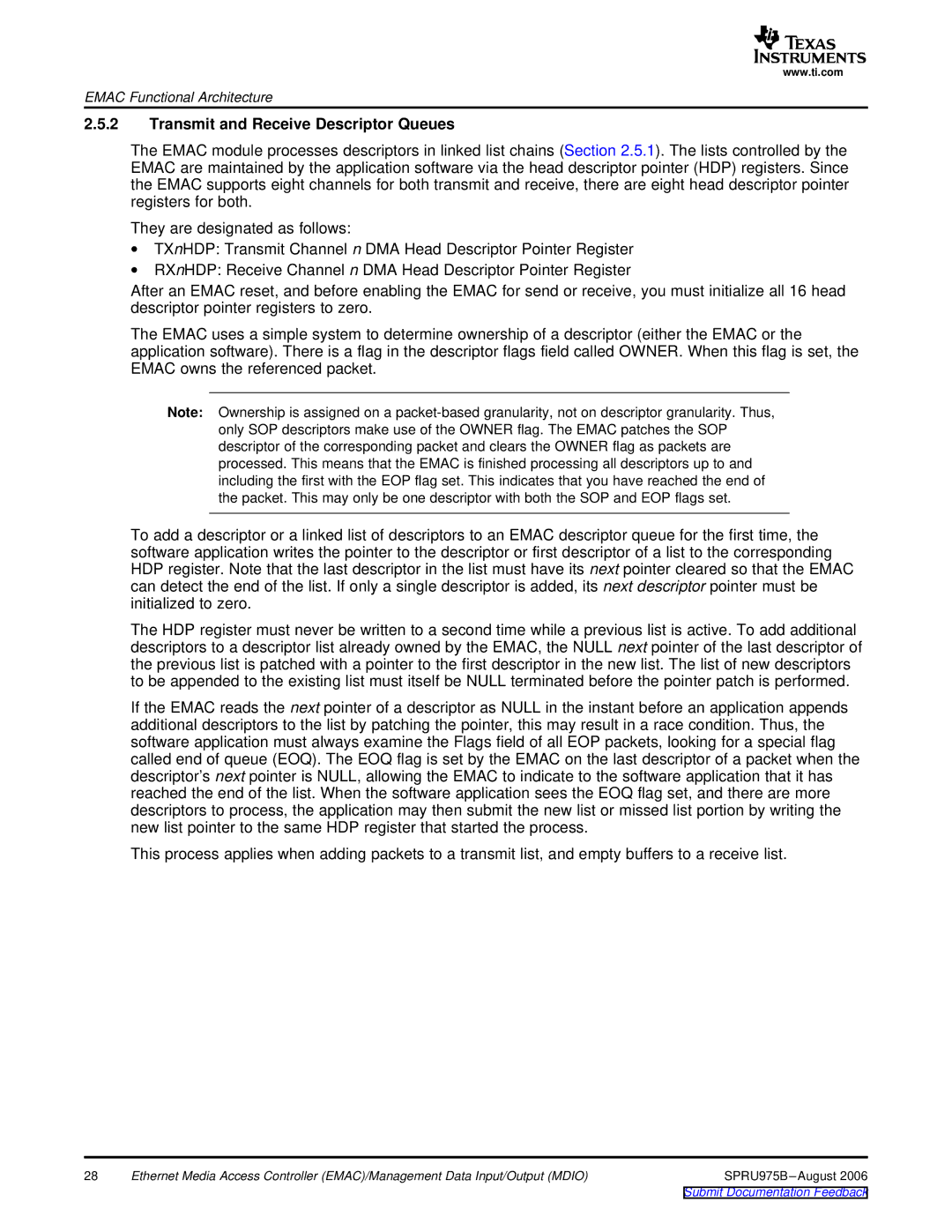
www.ti.com
EMAC Functional Architecture
2.5.2Transmit and Receive Descriptor Queues
The EMAC module processes descriptors in linked list chains (Section 2.5.1). The lists controlled by the EMAC are maintained by the application software via the head descriptor pointer (HDP) registers. Since the EMAC supports eight channels for both transmit and receive, there are eight head descriptor pointer registers for both.
They are designated as follows:
∙TXnHDP: Transmit Channel n DMA Head Descriptor Pointer Register
∙RXnHDP: Receive Channel n DMA Head Descriptor Pointer Register
After an EMAC reset, and before enabling the EMAC for send or receive, you must initialize all 16 head descriptor pointer registers to zero.
The EMAC uses a simple system to determine ownership of a descriptor (either the EMAC or the application software). There is a flag in the descriptor flags field called OWNER. When this flag is set, the EMAC owns the referenced packet.
Note: Ownership is assigned on a
To add a descriptor or a linked list of descriptors to an EMAC descriptor queue for the first time, the software application writes the pointer to the descriptor or first descriptor of a list to the corresponding HDP register. Note that the last descriptor in the list must have its next pointer cleared so that the EMAC can detect the end of the list. If only a single descriptor is added, its next descriptor pointer must be initialized to zero.
The HDP register must never be written to a second time while a previous list is active. To add additional descriptors to a descriptor list already owned by the EMAC, the NULL next pointer of the last descriptor of the previous list is patched with a pointer to the first descriptor in the new list. The list of new descriptors to be appended to the existing list must itself be NULL terminated before the pointer patch is performed.
If the EMAC reads the next pointer of a descriptor as NULL in the instant before an application appends additional descriptors to the list by patching the pointer, this may result in a race condition. Thus, the software application must always examine the Flags field of all EOP packets, looking for a special flag called end of queue (EOQ). The EOQ flag is set by the EMAC on the last descriptor of a packet when the descriptor’s next pointer is NULL, allowing the EMAC to indicate to the software application that it has reached the end of the list. When the software application sees the EOQ flag set, and there are more descriptors to process, the application may then submit the new list or missed list portion by writing the new list pointer to the same HDP register that started the process.
This process applies when adding packets to a transmit list, and empty buffers to a receive list.
28 | Ethernet Media Access Controller (EMAC)/Management Data Input/Output (MDIO) | SPRU975B |
